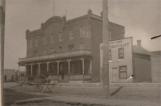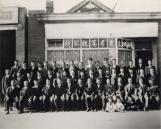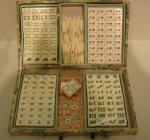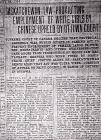1
While each province had its own variations, racism in Canada was institutionalized into several discriminatory pieces of federal legislation. Upon the completion of the railroad in 1885, once coveted Chinese labour was no longer necessary – or desired. The Canadian government instituted a $50 entry tax – more commonly referred to as a Head Tax – on all Chinese entering Canada, making evident the intention to discourage Chinese from entering Canada. This tax, which was raised to $100 in 1900 and $500 in 1903, culminated in the Chinese Exclusion Act of 1923, in which all Chinese, with the exception of merchants, scholars, diplomats, and those holding proof of birth in Canada, were denied entry onto Canadian soil.2
The result of this legislation was an even more prolonged separation between the men that first arrived in Canada and their families in China, as no one knew when or if the Acts would ever be repealed. As well, the emergence of these types of legislation – which were to be reproduced in various guises in the following years – would perpetuate the feeling that a difference existed between Chinese immigrants and those from other parts of the world.4
The immigrants who arrived in Moose Jaw at the turn of the century found the seeds of a town that were soon to grow. The Chinese community at this time was made up almost exclusively of men. With the initial intention of coming over for a few years to work, save up money, and return to China, few Chinese men brought their wives with them, opting instead to have them stay behind in China and await their return.5
The lack of Chinese women in Canada exacerbated prejudice by intensifying the suspicions of Chinese abnormality. Almost exclusive bachelorhood was enough to raise eyebrows on its own, but being far from home and without a family structure, many men easily fell into pastimes such as drinking, gambling, and smoking opium.7
Helen Paterson was born in 1925 and was the daughter of Charlie Chow, one of the first and most prominent Chinese residents in Moose Jaw. Helen was a frequent visitor to her father's store on River Street. During summers she and her brother would often help her father out by delivering groceries to neighbouring establishments. She recalls how common gambling was in the Chinese community: "There was only about a block on River St. that was actually considered the Chinatown. And everybody knew there was gambling behind the back door.... I think this must have been the forerunner of the Keno. Keno – the game, because a lot of the Chinese men used to sell the spots, they were called. Chinese characters. And, they'd go around to every different place and a lot of the white business people bought them and for 10 cents you'd mark 10 spots. And then they'd have the draw about four times a day... But the actual gambling they played fan tan and mahjong in where they gambled. We certainly would never have been allowed to go in there, nor did my dad have the habit because he wasn't a gambler. But he knew about it being there."9
These pastimes were not limited to Chinese alone. Travelers and Moose Jaw residents also indulged. The police force at this time was notorious for turning a blind eye to the activities that gave River Street its reputation for high times and vice and this subsequently contributed to the stigmatization of the Chinese.11
Stereotypes of Chinese debauchery and immorality still commonly circulated, contributing to several pieces of provincial legislation intended to discourage Chinese from establishing residency here. In 1908, Saskatchewan barred Chinese from voting in provincial elections regardless of place of residency or birth, being the only province to do this other than British Columbia. A second, equally unpleasant bill came into effect on May 1, 1912. Popular misconceptions of Chinese immorality were particularly evident in the Act to Prevent the Employment of Female Labour in Certain Capacities, otherwise known as the White Woman's Labour Law.13
This act specifically barred Chinese employers from hiring white women. Despite similar fears prevalent throughout Canada, only Saskatchewan passed this law. By capitalizing on fears of competition from ‘immigrant labour,' the Saskatchewan Trade and Labour Council, a union organization, was instrumental in getting this law passed.14
The Brunswick Hotel and Quong Sing Restaurant on River Street1910
River Street, Moose Jaw, Saskatchewan





